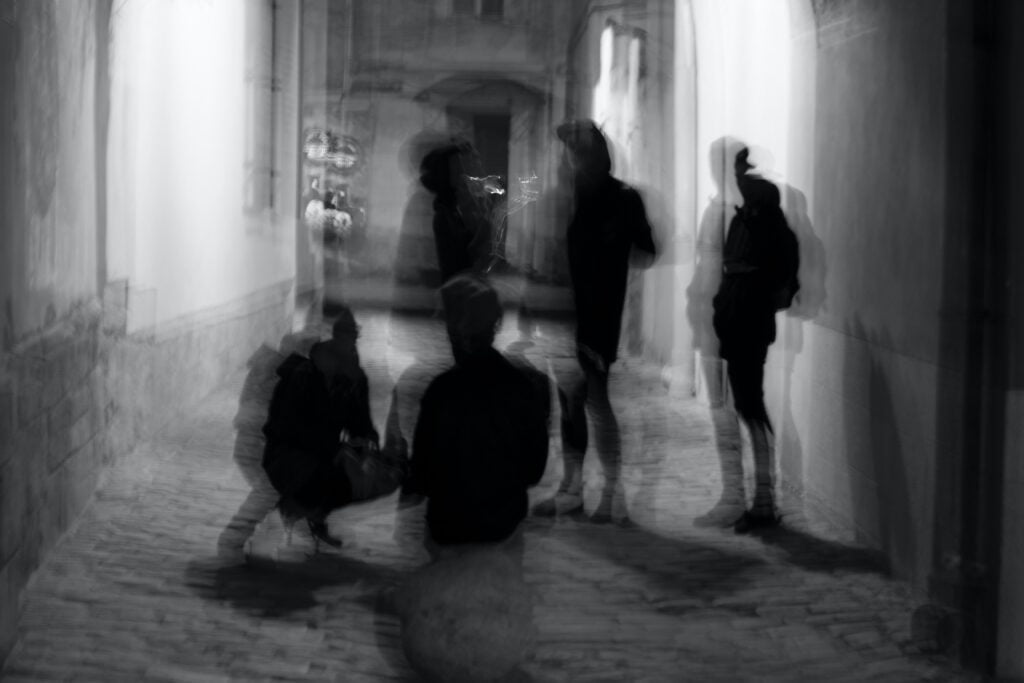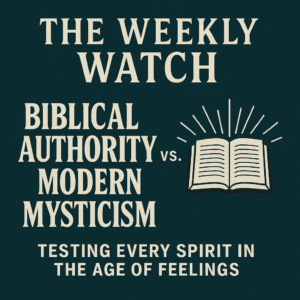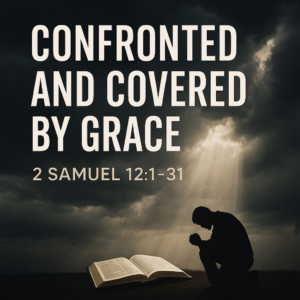⏱️ Estimated Reading Time: 12 min read
I had my first ever panic attack the other day, and I hope never to experience another. At one level, it was a trauma too unsettling to talk about. At another, it was an experience too painfully affecting to be silent about. But despite its terrifying effect, my impulse is to share it since what it taught me about fear might be helpful for others to know.
I had been scheduled for a Magnetic Resonance Imaging (MRI) test to diagnose the cause of unrelenting back pain. For those unaware, an MRI is a high-tech diagnostic tool that produces astonishing images of one’s insides. My MRI machine was of the enclosed variety, meaning that it had a very narrow “tunnel” into which my body would be “slid”; there to lie still for half an hour as the machine did its thing. I’ve had a few MRIs before, all with little or no trauma, but this time, my experience would be different.
Things started badly, as the office kept me in the waiting room for nearly 50 minutes. There, while breathing into a COVID mask with my back aching and my 31-year-long incessant headache pounding and stabbing, a low-grade apprehension began to rise. To make it worse, Gayline wasn’t there to put me at ease. She had stayed home at my insistence since I had never had any MRI issues before, and she had plenty else to do. Besides, I was a big boy, after all.
They finally called into the testing room, where I was told to put on a bizarre outfit and then lie down on my aching back on a hard, barely padded surface. The technician was kind but matter-of-fact in telling me that I would have to lie motionless for 30 minutes, head-first inside the MRI machine. That’s when panic first surged: “How am I going to do that? How can I lie motionless for 30 minutes in the very position that hurts me most—and do it headfirst inside of this machine with its narrow surrounding and confining tunnel?” Mind you: all of that flitted through my brain five-times faster than the speed of speech.
What happened after that took only seconds to occur but was so traumatic that it would be long seared into my psyche. Just a few ticks into the machine, I panicked. And within another few seconds, several high-speed sensations totally unnerved me. The machine’s steady rat-a-tat sounds were too loud. The headset FM music intended to mask the machine noise had gone to an obnoxious advertisement with the volume too high. The enclosed tunnel for my body was too narrow. The “ceiling” of the tunnel was so close as nearly to touch my face. Thoughts sped. “I gotta get out, but I don’t think she can hear me. What if she can’t? Then I’m in here for 30 minutes. What if it breaks and cannot get out? I have to grab the little mic she gave me to talk to her with, but where did it go? O no! Just when I thought I was in all the way, she’s moving my ‘bed’ even further into the machine; another 2-3 feet deeper in—or at least, so it feels. I feel like I’m sinking into the machine—like I’m being swallowed. I can’t do this! I gotta get out. I can’t. I can’t. Let me out!”
Thankfully, the technician heard me and let me out. But not before I was sorely traumatized. Much to my relief, she said that while she tries a second time for some people, she wouldn’t for me. My panic was too quick and too strong. I was too “red,” she said. Not sure what she meant by that. She either saw the stress on my face or a monitor needle gauging stress levels had swung violently into the red zone. Either way, she knew. She was kind about it, but she knew: this guy can’t handle it. And if she or anyone else had thought otherwise and tried to convince me that the machine would not hurt me and I could handle it, I would have said, “Well, that may or may not be, but I’m not hanging around to find out!”
And so it was that a six-foot-four fairly healthy and reasonably rational man with a pretty high pain threshold, and a proven history of effective personal stress management, was reduced to a puddle of distress in a matter of seconds. And seven hours later, I was still a mess; emotional, tired, teary, shaken, ready for bed in the hope that I could put it all to rest. I slept well enough that night, but I woke up still tired and shaken; with a feeling that I—in my humanness, my weakness, my vulnerability, my frailty, my complexity, and my fragility—had been exposed. Fear had taken on new meaning to me. There’s an irrationality and uncontrollability to some forms of fear that horrify the mind. There are moments when people feel absolutely vulnerable and fragile. The fragility of me is terrifying.
Is There Any Lesson in This?
Heeding the words of a man I respect, I do not want to “waste” my MRI experience by quickly dismissing or denying it as no big deal. What do I do with this? What am I to learn from it? How can I help others through it? As I process this moment, one noteworthy realization is that fear is sometimes so reflexive, so strong, and so deep that it can seize control of our thoughts with sudden and then stubbornly terrifying force; and often in defiance of all reason. Sometimes it simply cannot reason—or at least, that’s how it really, really, really feels.
Which leads me to this: the next time I encounter someone who battles fears, I will resist the immediate temptation to question the rationality of those fears. Sometimes fear just happens. When pain is real, when life presses in when the tunnel into which we are squeezed leaves us too little room to breathe when the daily rat-a-tat noise of an angry, violent world increases when life feels like it’s stuck in the middle of a long obnoxious political advertisement. When people feel trapped, alone, vulnerable, and defenseless—they (we) are going to be afraid, and maybe wildly so.
A Fear Pandemic
I feel safe in assuming that many will know what I’m talking about. Like me, almost all of us have had at least some moments of soul-seizing traumatizing fear. It’s pretty near impossible to walk this planet for long without encountering something that makes you tremble. I am often afraid, and I do not think that I am alone. Fear is common to us all, even if we try to project otherwise. In truth, there’s a fear pandemic across our world these days:
- Some fear being alone.
- Others fear being in community.
- Some fear that they will never truly be known.
- Others fear that they will truly be known.
- Some fear poverty.
- Others fear prosperity.
- Some fear COVID contamination.
- Others fear wearing masks to avoid COVID contamination.
- Some fear the effect of not meeting for church.
- Others fear the effect of meeting for church.
- Some fear their husband’s manipulation and abuse.
- Others fear their wife’s rage and venom.
- Some fear with tearful dread one possible result of the pending election.
- Others fear with tearful dread the other possible result of the pending election.
- Some fear that they will never have freedom in America.
- Others fear that they will no longer have freedom in America.
- Some fear the return of lynch mobs.
- Others fear the spread of violent protests.
- Some are police officers who fear for their lives.
- Others are blacks who fear police officers.
- Some fear the funding of the police.
- Others fear the defunding of the police.
- Some fear being blamed for racist evils they didn’t do.
- Others fear that no one will accept responsibility for what has been done.
- Some fear that they will be swallowed up in fear.
- Others fear that somebody might find out that they are afraid.
We might be tempted to rush to judgment when we see this list. “Why should they be afraid? We’re the ones who should be afraid. The facts don’t support that fear. Why won’t people just be reasonable and logical, like me?” But such self-righteous and callous judgments do nothing to cure the fear pandemic of our times. During my MRI experience, fear defied logic. It hijacked my thought processes and high-tailed it into irrationality so fast that it took logic days to catch up. Even now, I’m not sure it has.
Truth be told, I’ll admit that I don’t know fully what to do about our current fear pandemic, except to say that guilt-mongering won’t help. Perhaps we should start within the Church by sitting down with each other to listen hard and deep, expressing genuine care for others in what they are feeling. When fear strikes, love’s first task is not to analyze and critique but to sympathize and grieve.
Some might judge this to be naïve, but I am inclined to think that in God’s sight, how we treat each other during COVID crises, social chaos, racial upheaval, and a heart-sickening election season is more important than these crises themselves. Perhaps, we should be more concerned about comforting our brothers and sisters than about correcting them. Maybe, we should be more concerned about loving the elect than about arguing about an election. Maybe we should hold each other’s hand, weeping along with the weeping, and then gently reassure each other that there is One who alone can give our spirits peace. One thing I know is that we should not start by posting on Facebook our raging sarcasm about the stupidity and obvious moral bankruptcy of those who think and fear differently than we.
A storm has gathered, and perhaps it is time for us to pause and admit that we’re all afraid, even if some, more than others. Perhaps it is time to respond to each other with something other than a long list of facts to debunk one another’s fears. Facts do matter, of course, and we should try to be informed and then inform, at the right time and place and way. But most of those we meet each day—including most of the acquaintances who receive our latest Facebook posts—are not in need of a litany of facts or our angry, sarcastic rants over their “baseless” fears. There are reasons for their fears, even if we don’t understand them, or doubt that they are valid, or think that we have the “facts” and logic to discredit them.
Of course, we all know that fear usually involves weakness of faith—or maybe better put, forgetfulness of faith—somewhere in the soul. After all, if I had been 100% locked into the reality of God while in my MRI machine, I may not have panicked. And maybe that could be said about most fears. But who among us is 100% locked into God? The truth is that all of our fears are a mix of spiritual forgetfulness, doubt, genetic wiring, facts and logic known to us (but not to others), and life experiences—all blended with the daily glut of information, misinformation, and even disinformation that pours into our lives. People’s resultant fear is real, even if we believe that their “reasons” aren’t. It is powerful. It is visceral. It is relentless. And it produces distrust, panic, depression, anger, accusation, addiction, and more. And no one is immune.
Add in the influential people in our world who deliberately incite fear—and there are plenty of such evil folks on all sides these days—and the fear factor intensifies. These inciters will face their own terror on the Day when God holds them accountable and makes them pay, but in the meanwhile, fear-mongers peddle fear every day—and we all feel their effect.
If nothing else, my daily fears—and I have plenty of them—now mixed with a panic attack I will never forget, will affect the way I care for people. Now more than ever, my tone toward the fearful will not be corrective but supportive; not argumentative and denying, but sympathetic and comforting; not critical and dismissive, but respectful and attentive. At least, I hope this is who I will become.
Do Not Be Afraid
The prevalence of fear in our world may explain why the imperatives, “Do not be afraid” and “Do not fear” appear so often in Scripture (Isaiah 35:4; 40:9; 41:10; 2 Kings 6:16; Joshua 10:25; Matthew 10:31; 14:27; 28:5; John 6:20; 14:27; Revelation 1:17). First, it suggests that there are many things in this world that cause fear—and God in his kind watchfulness knows it and wants us to know that he knows. And second, it reminds us that our Heavenly Father is here for us—to comfort and protect; and that with him near at hand, it will be okay at the end of it all—whether we’re stuck in an MRI or living in a war-zone. Yes, he is right here with us and always will be. It helps to know and say that, even when we cannot see or feel that it is so.
And now, may the God of all comfort give grace to us all, both to calm our fears and to enable us to give grace to all who are afraid. Amen.




